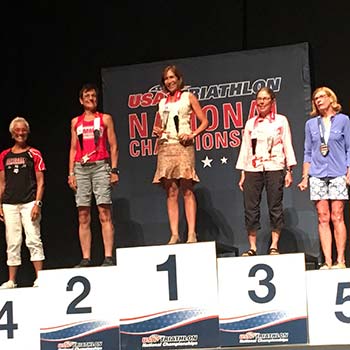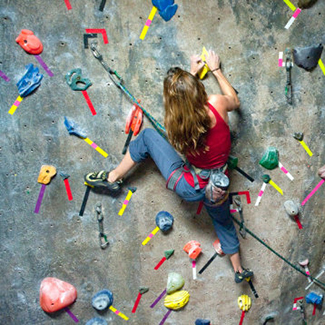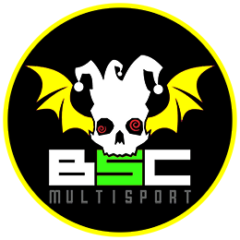Your Off-Season is the beginning of the road to success in 2020.

You’ve finished your final race and completed your triathlon season. The off-season has begun. After months of structured training and racing, the calendar is empty and the cold, short days of winter are rapidly approaching. For some athletes, this is a depressing time. The reality though is that Champions are made in the off-season.
The off-season is a time of rest and renewal, planning and preparation. When done right, the off-season is the foundation upon which an entire season is built.
Rest
At the end of your season, a break from structured swim/bike/run training allows healing of the body, to prevent injury; and the mind, to prevent burnout. Simply put, we need time off from training and racing in the off-season so that we can recover, reflect on performance and adjust or readjust our goals.
How long a break from structured training should you take in this phase of the off-season? I generally recommend 1 day of active recovery or passive rest for each mile run in your final “A” race. For an Ironman or stand-alone marathon, that’s at least 4-weeks. Maybe more if you are overcoming an injury. For athletes who’ve done shorter events such as a Sprint or Olympic Triathlon, I like to see 2-4 weeks. The key is doing next to nothing the final two weeks of that break. That’s VERY hard for most triathletes after a season of building fitness as they ponder the consequences of time off. Will you lose some fitness? Absolutely! For most athletes, by the end of a successful season of training, fitness has likely risen to a level that is unsustainable. Not only does a break allow you to recover and heal, but it also allows your fitness level to decline to a manageable level so your training can move forward instead of stagnating, causing a plateau.

Do nothing doesn’t really mean “do nothing.” It means do nothing swim/bike/run related and do other things in moderation. The off-season is a great opportunity to try things you don’t have time for during the season – rock climbing, basketball, and yoga are a couple of examples.
Change it Up
After the post-season break, cross-training in the fall or early winter can be a great way to change things up from your normal training. Let’s face it, a run’s a run, a ride’s a ride – even if you are mixing it up between indoors and outdoors, intervals and long rides/runs – it’s still riding a bike or running. We won’t even talk about swimming and looking at a line on the bottom of the pool for lap after endless lap. For the first month or two after that initial rest break, you might consider group rides and enjoy the social aspect of cycling. Mountain biking and hiking are effective ways to improve your aerobic engine while not doing swim/bike/run. If you live in a colder climate, a fat bike ride in the snow, snow-shoeing, or X/C skiing are all challenging aerobic workouts. The occasional swim/bike/run workout is OK, but the point is to break from your normal training schedule. This is also a perfect time to re-introduce weight training into your training – especially if you are a senior athlete.
Reflect

As you rest and move away from the end of the season, you will naturally begin to look back and reflect. This is one of the hardest things to get right. Looking inward is hard. It’s difficult to be completely objective and accurately evaluate yourself, yet that’s precisely what you need to do so that you can create goals and form plans for next season. You may realize your swim is holding you back and you need to improve a few seconds per 100 or conclude that losing 10 pounds will help your bike split. Perhaps it’s time to finally address that nagging IT Band issue that’s holding you back on the run. As you analyze the past, you’ll begin to see a roadmap to the future.
Set Goals
This is where you turn the page to next season. You’ve identified limiters that are holding you back. Using SMART goals, begin to create a plan for improvement that addresses your weaknesses. Next, look ahead at a race calendar for next year. Identify your “A” race(s) and put together a “high-altitude” overview of your season. Once your race calendar is put together, it’s time to begin zeroing in on the training cycles and how to meet your race goals.
I’d be remiss if I didn’t mention coaching at this point. Yes, talking about coaching may sound a bit self-serving as I’m a coach. I’m not looking for new clients. My purpose is to help you look ahead to next season and often that entails a discussion about coaching. Anyone can benefit from a coach. The closer you are to podium finishes, to a Kona qualification, or perhaps stepping up to long course distances, the more you can benefit from a coach. A coach can and will guide you to improved performance. A coach offers objectivity, improves your accountability, and takes the guess-work out of training.
Base Training
After weeks of rest, changing it up with some cross-training, reflecting on the previous season and setting goals for the new season, it will again be time to turn your attention to building your aerobic base. Remember when you get back to base, that it won’t be about speed records or new peak power notifications. Early base training is about time in the saddle, meters in the pool and miles in the legs.
Conclusion
Your off-season is a time to recover from your race season, but it’s also a time to prepare for next season. By deliberately resting and recovering, by breaking old routines and consciously seeking new methods, you can roll into the upcoming season refreshed, recharged, stronger and ready for the challenges ahead.
Happy training and racing!
